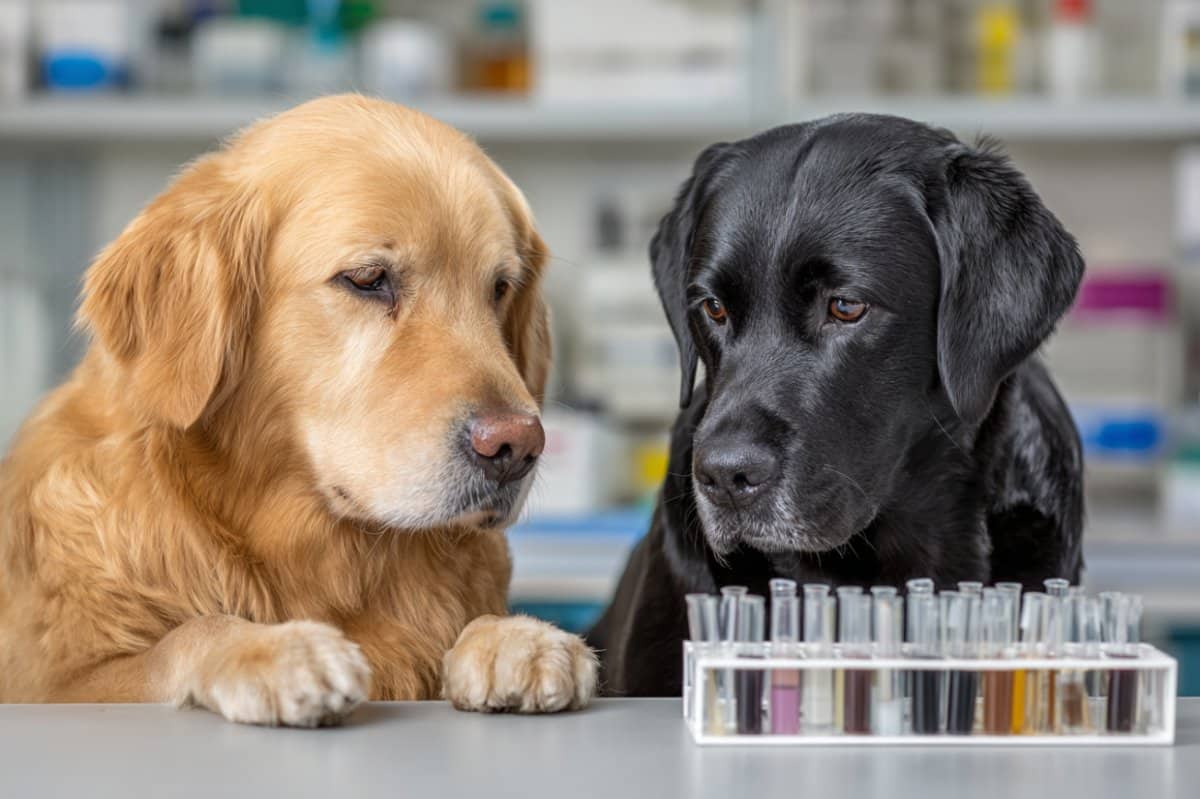Summary: Trained detection dogs can identify Parkinson’s disease (PD) with remarkable accuracy by sniffing skin swabs, according to a new study. In double-blind trials, the dogs achieved up to 80% sensitivity and 98% specificity, even when samples came from patients with other health conditions.
This non-invasive method could help uncover reliable biomarkers for earlier diagnosis and treatment of PD, which currently lacks a definitive test. The findings highlight dogs’ unique ability to detect the subtle olfactory signature of Parkinson’s years before clinical symptoms become clear.
Key Facts:
- High Accuracy: Dogs identified PD with up to 80% sensitivity and 98% specificity in blind tests.
- Non-Invasive Test: Skin swabs provided a quick, simple way to detect PD’s unique scent.
- Early Intervention Potential: Earlier diagnosis could slow disease progression and improve outcomes.
Source: University of Bristol
People with Parkinson’s disease (PD) have an odour that can be reliably detected from skin swabs by trained dogs, a new study shows.
The research, in collaboration with Medical Detection Dogs and the Universities of Bristol and Manchester, is published in The Journal of Parkinson’s Disease today [15 July].
Two dogs were trained by the charity, Medical Detection Dogs, to distinguish between sebum swabs from people with and without Parkinson’s disease.

In a double blind trial, they showed sensitivity of up to 80% and specificity of up to 98%.
Not only that, they detected it in samples from patients who also had other health conditions.
The dogs were trained over a number of weeks on over 200 odour samples from individuals that had tested positive for PD and control samples from people who did not have the disease. Samples were presented to the dogs on a stand system and the dogs were rewarded for correctly indicating a positive sample and for correctly ignoring a negative sample.
In the double-blind testing, meaning that only a computer knew where the correct samples were, each line was also presented in reverse order so that samples for which no decision was made were re-presented. Then any unsearched samples were collected together in new lines, until a decision had been made for all samples.
A definitive diagnostic test for Parkinson’s Disease (PD) remains elusive, so identification of potential biomarkers could help diagnosis and timely intervention.
Claire Guest, Medical Detection Dogs CEO and Chief Scientific Officer, says: “We are extremely proud to say that once again, dogs can very accurately detect disease.
“There is currently no early test for Parkinson’s disease and symptoms may start up to 20 years before they become visible and persistent leading to a confirmed diagnosis.
“Timely diagnosis is key as subsequent treatment could slow down the progression of the disease and reduce the intensity of symptoms.”
Nicola Rooney, Associate Professor at Bristol Veterinary School at the University of Bristol and lead author, says: “Identifying diagnostic biomarkers of PD, particularly those that may predict development or help diagnose disease earlier is the subject of much ongoing research.
“The dogs in this study achieved high sensitivity and specificity and showed there is an olfactory signature distinct to patients with the disease. Sensitivity levels of 70% and 80% are well above chance and I believe that dogs could help us to develop a quick non-invasive and cost-effective method to identify patients with Parkinson’s disease.”
Perdita Barran, Professor of Mass Spectrometry at The University of Manchester, said: “It’s wonderful to be part of this research inspired by Joy Milne and our Nose2Diagnose programme.
“This study adds to the growing body of evidence showing that simple, non-invasive skin swabs can be used to diagnose Parkinson’s disease, offering a faster and more accessible method for early detection.”
The two dogs in the study were Golden Retriever, Bumper and Black Labrador, Peanut.
About this olfaction and Parkinson’s disease research news
Author: Joanne Fryer
Source: University of Bristol
Contact: Joanne Fryer – University of Bristol
Image: The image is credited to Neuroscience News
Original Research: Open access.
“Trained dogs can detect the odor of Parkinson’s disease” by Perdita Barran et al. Journal of Parkinson’s Disease
Abstract
Trained dogs can detect the odor of Parkinson’s disease
A definitive diagnostic test for Parkinson’s disease (PD) remains elusive, so identification of potential biomarkers can facilitate diagnosis and early intervention.
Two dogs were trained to distinguish between dry skin swabs obtained from people with Parkinson’s (PwP) and control participants.
After 38–53 weeks of training on 205 samples, the dogs were tested in a double-blind trial using 60 control and 40 target (drug-naïve PwP) samples.
They each showed high sensitivity (70% and 80%) and specificity (90% and 98%).
This supports previous findings that dogs can be trained to reliably detect the odor of PD.
Plain language summary
There is currently no single, reliable test for Parkinson’s disease. Understanding the biological changes that happen in the body may help early diagnosis. Dogs have an incredible sense of smell and have been trained to detect a variety of diseases.
Here we have trained two dogs to tell the difference between the oily skin secretions, known as sebum, from people with Parkinson’s and those without. After their training, the dogs were tested using 60 new control and 40 target skin swabs.
The dogs correctly identified 70% and 80% of the Parkinson’s samples and correctly ignored 90% and 98% of the control samples.
These results support earlier research showing that dogs can be trained to reliably detect the smell of Parkinson’s disease.






